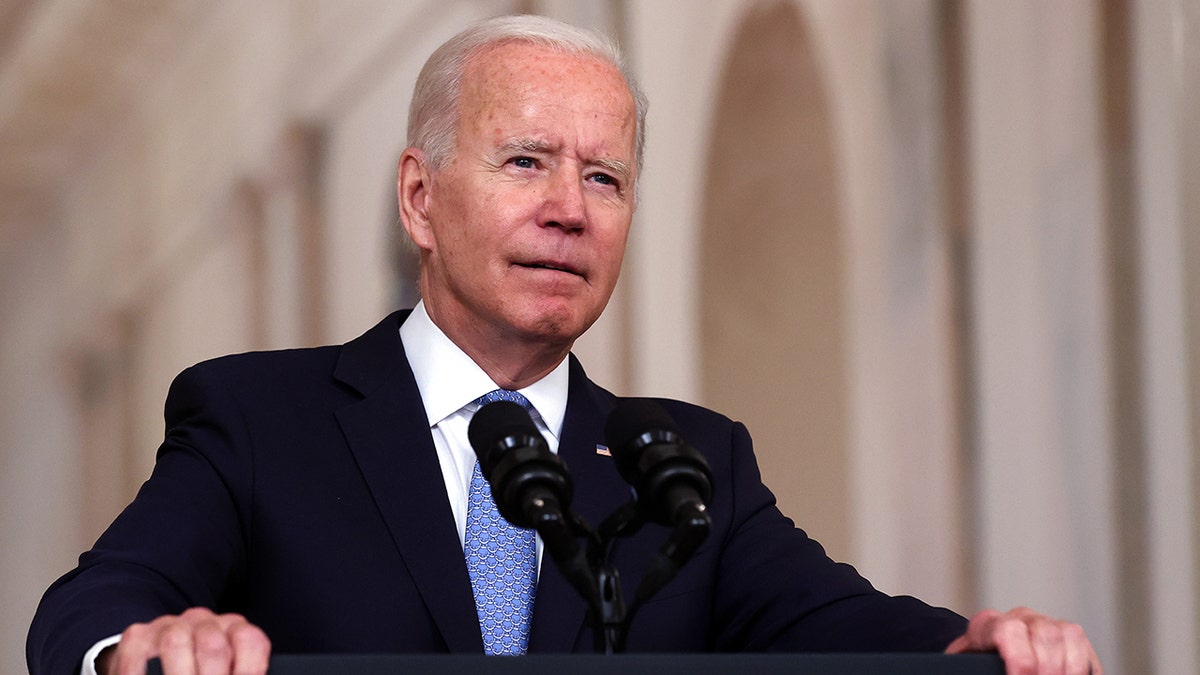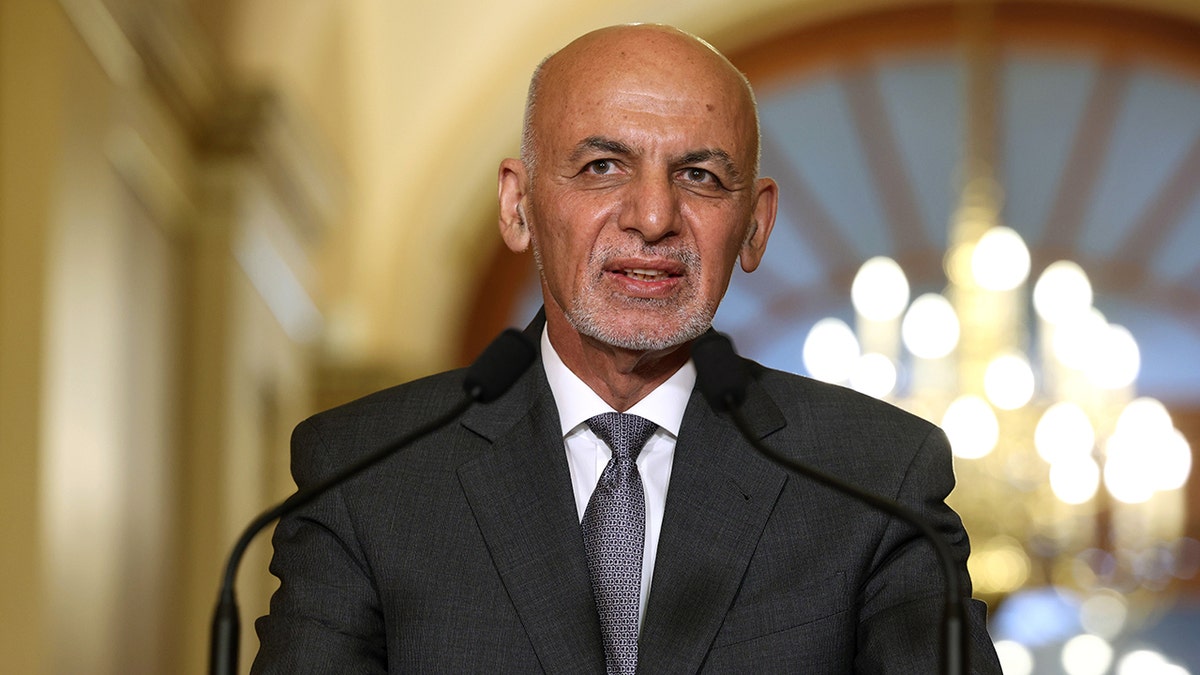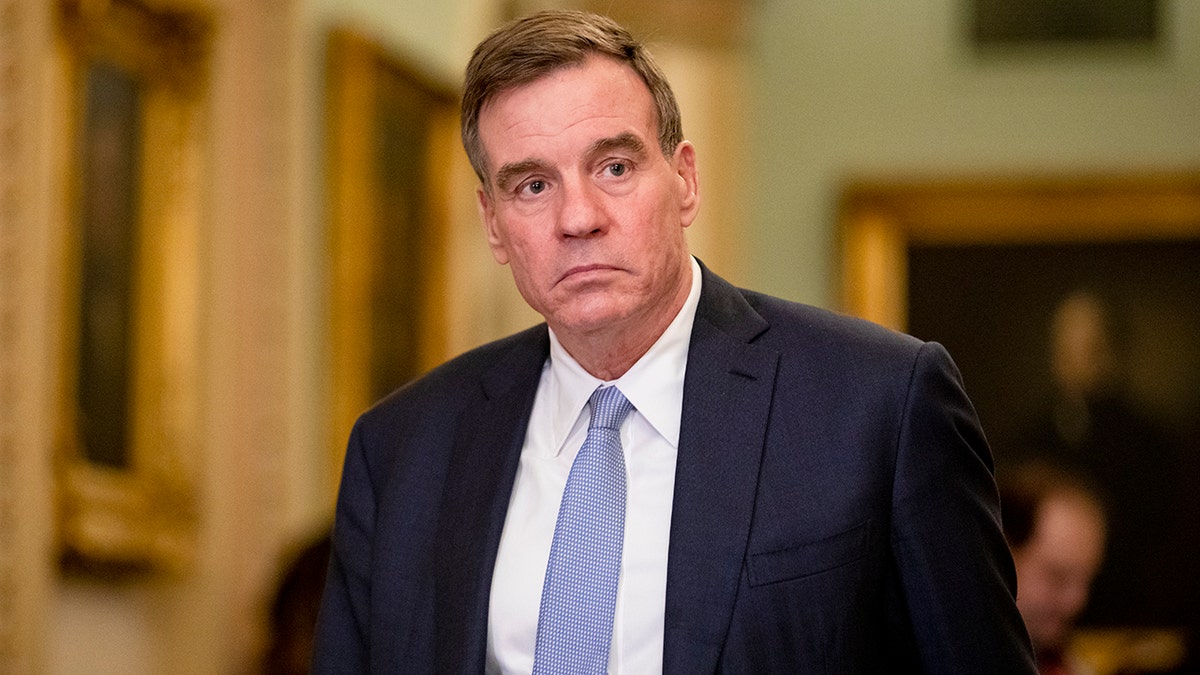Fox News Flash top headlines for October 28
Fox News Flash top headlines are here. Check out what's clicking on Foxnews.com.
Leading U.S. intelligence agencies failed to predict the rapid Taliban takeover of Afghanistan prior to the final withdrawal of American troops and instead offered scattershot assessments of the staying power of the Afghan military and government, a review of wide-ranging summaries of classified material by The Wall Street Journal shows.
The nearly two dozen intelligence assessments from four different agencies haven’t been previously reported. The assessments charted Taliban advances from spring 2020 through this July, forecasting that the group would continue to gain ground and that the U.S.-backed government in Kabul was unlikely to survive absent U.S. support.
The analyses, however, differed over how long the Afghan government and military could hold on, the summaries show, with none foreseeing the group’s lightning sweep into the Afghan capital by Aug. 15 while U.S. forces remained on the ground.

President Biden delivers remarks on the end of the war in Afghanistan in the State Dining Room at the White House in August. (Chip Somodevilla/Getty Images)
FAMILIES OF AMERICAN HOSTAGES SAY BIDEN IS KEEPING THEM ‘IN THE DARK’
A month after President Biden announced his decision to withdraw all U.S. troops, for instance, the Central Intelligence Agency issued a May 17 report titled "Government at Risk of Collapse Following U.S. Withdrawal." The report estimated that the government of Afghan President Ashraf Ghani would fall by year’s end, according to a summary.
Less than a month later, the agency issued another analysis titled: "Afghanistan: Assessing Prospects for a Complete Taliban Takeover Within Two Years," according to a summary.
A June 4 Defense Intelligence Agency report, meanwhile, said the Taliban would pursue an incremental strategy of isolating rural areas from Kabul over the next 12 months, according to a summary. In an "Executive Memorandum" on July 7, the DIA said the Afghan government would hold Kabul, according to a person familiar with the report.
The intelligence shortfalls underpinned some of the policy failures that resulted in chaotic mass civilian evacuations in the deadly final weeks of the U.S.’s 20-year Afghan war.
The summaries of the reports, which start in April 2020, provide the most detailed picture to date of what the U.S. intelligence community was telling Mr. Biden, and President Donald Trump before him, as each president sought to end the war that killed 2,400 U.S. military personnel and by some estimates cost more than $2 trillion.
Policymakers across the national-security apparatus rely on such intelligence reports to shape their decisions and planning. While varied and conflicting assessments are common, the disparities may complicate efforts among decision makers to reach consensus. For the Afghan withdrawal, contingency planning, including the evacuation operations, relied heavily on the intelligence assessments, U.S. officials with knowledge of the policy planning said.
STATE DEPARTMENT ISSUES FIRST GENDER X PASSPORT
Members of Congress have been scrutinizing many aspects of the tumultuous exit from Afghanistan, including the performance of the intelligence community, after the administration was blindsided by the Taliban’s rapid advance.
Assumptions that the Afghan security forces and government could hold out for some time were central to the administration’s withdrawal plans. Those called for the U.S. military to draw down rapidly while the embassy remained well-staffed to provide visas and other support to Afghan allies weeks and months after American troops left.
When the Afghan government cratered, the U.S. military — much of which had left the country by August — reversed course, sending thousands of troops to evacuate the embassy and Afghans. In the ensuing rush, a suicide bombing and other violence killed scores more Afghans and 13 U.S. service members. Tens of thousands of Afghan allies and about 200 Americans were left behind.
The Journal reviewed titles, dates and summaries of reports from the CIA, the DIA, the Office of the Director of National Intelligence and the State Department’s intelligence bureau. The documents represent a portion of the intelligence produced by those and other agencies on the deteriorating security situation in Afghanistan.
Representatives of the CIA, the DIA, the State Department and the Office of Director of National Intelligence, which coordinates all U.S. intelligence agencies, declined to comment.
"Directionally, they were all correct that things were going to deteriorate," a senior administration official said, while acknowledging that the agencies provided a "mixed picture." "They’re not oracles," he said.
Mr. Biden promised to withdraw from Afghanistan when he ran for president, and the U.S. officials with knowledge of the policy planning said the varying intelligence assessments had little impact on his decision to withdraw.
National security adviser Jake Sullivan said in August that the administration would conduct a "hotwash" of the withdrawal to determine "where we can do better, where we can find holes or weaknesses and plug them, as we go forward."
An administration official said various agencies have begun or will soon begin their reviews.
CIA Director William Burns, among others, has defended the intelligence agencies’ overall performance while acknowledging that events unfolded faster than predicted.
"There’s a very sobering picture that we painted of some very troubling trend lines" in Afghanistan, he said at a Stanford University appearance last week. "So does that mean that we, with mathematical precision, can say that, you know, former President Ghani in Afghanistan is going to flee his office and not tell his senior-most aides on the 15th of August? No."
Mr. Ghani fled the country as the Taliban entered Kabul.

President of Afghanistan Ashraf Ghani speaks to reporters at the U.S. Capitol in June. Ghani fled as the Taliban entered Kabul. (Anna Moneymaker/Getty Images)
Current and former officials said that intelligence agencies’ ability to track the course of the war outside Kabul eroded rapidly as U.S. troops began withdrawing from Afghanistan under Mr. Trump and closing far-flung bases used as collection platforms. That diminishing intelligence-collection capacity became a growing concern among lawmakers in the months leading up to the fall of Kabul, a Senate aide said.
"As you pull troops back, you’re not able to have collectors forward," said Army Col. Thomas Spahr, who helped manage the drawdown of military intelligence assets in Afghanistan from summer 2019 to summer 2020. The CIA, he said, ceased to conduct annual district-by-district assessments in the country.
Sen. Mark Warner, the Virginia Democrat who chairs the Senate Intelligence Committee, said that after reviewing intelligence reports leading up to the evacuation and holding classified hearings, "the intelligence was fundamentally accurate and on-point in predicting the trajectory of the Taliban takeover." That a rapid withdrawal would be chaotic "should have come as no surprise," he said in a statement.

Sen. Mark Warner (D-VA) returns to the Senate floor following a recess in the Senate impeachment trial of President Donald Trump in January 2020. Warner said that Intelligence was accurate in showing the trajectory of the Taliban's takeover of Afghanistan. (Samuel Corum/Getty Images)
Bill Roggio, a senior fellow who follows Afghanistan at the Foundation for Defense of Democracies, a hawkish think tank in Washington, said intelligence agencies and policy makers bear responsibility for being blindsided by the Taliban’s swift battlefield success.
Mr. Roggio said individual analysts at several agencies he was in touch with foresaw a rapid Taliban takeover, "and for whatever reason that didn’t make it to the top."
"The intelligence community needs to take a long, hard look at how it provides assessments to senior leadership," Mr. Roggio said. The White House, he said, seemed intent on the troop withdrawal.
After then-President Trump in February 2020 agreed with the Taliban to withdraw U.S. troops from Afghanistan by May 2021, a CIA report warned that the U.S.-supported government in Kabul was unlikely to survive.
The April 13, 2020, report titled, "How Afghanistan Collapses After U.S. Pullout" came from the CIA’s "Red Cell," whose mission is to conduct alternative assessments. It projected the demise of Mr. Ghani’s government once U.S. troops and funding were gone.
Another report, "Implications of Full US Troop Withdrawal," was published on Dec. 14, 2020, by the National Intelligence Council, which conducts long-range strategic analysis for the Director of National Intelligence. The NIC foresaw a rapid Taliban takeover but said the group’s gains would accelerate after a U.S. troop withdrawal.
In April, Mr. Biden announced the full withdrawal of U.S. troops from Afghanistan no later than Sept. 11, 2021. Former CIA Deputy Director Michael Morell said that announcement — and not the departure of the last U.S. soldier in August — started the clock ticking on how long the Afghan government could survive.
"That’s when the psychology changed for everybody in Afghanistan," he told an event at George Mason University’s Hayden Center in September. "It was the moment the Taliban knew it was going to win."
Mr. Morell said: "Throughout the history of the 20 years, CIA was by far — by far — the most pessimistic agency about how the war was going."
ARIZONA MARINE VET WHO DISARMED ROBBERY SUSPECT ACCEPTS HEROISM AWARD IN ‘LET’S GO BRANDON’ T-SHIRT
Intelligence from the CIA and DIA diverged in part, officials said, due to their differing missions. Overall, CIA assessments focused more on long-term and policy implications of the withdrawal, while the DIA, which serves the Pentagon, focused on military intelligence and tactical assessment and didn’t explore collapse scenarios, said an official familiar with the intelligence.
The senior administration official said the DIA "bought into some of the myths" about the capability of the Afghan military, which had been trained by the U.S.
In late April, DIA said that the Afghan National Defense and Security forces are "likely to hold Kabul while Taliban focuses elsewhere," according to one summary. A week later, the agency raised the potential for the Afghan government to splinter but said it would keep control of Kabul.
A June 8 report noted the potential for Afghan security forces to collapse in key provinces, but still Kabul would hold.
The CIA, by contrast, consistently warned of potential collapse after a U.S. pullout, the summaries show. During the last year of the Trump administration, the CIA reported that it saw three different scenarios after a U.S. military withdrawal: a garrison state, where Mr. Ghani’s military would control Kabul and its environs; a divided country with the government and Taliban each controlling parts of Afghanistan; or a complete Taliban takeover.
By April 2021, the CIA was warning of isolated highways, which jeopardized the Afghan government’s tenuous grip on power, and that Afghanistan would pose a terrorism threat outside its borders once the U.S. exited.
CLICK HERE TO GET THE FOX NEWS APP
A month later, the CIA predicted the government’s collapse without U.S. support, but saw that occurring a short time after the U.S. withdrawal.
Members of the Afghan government also foresaw a short time frame, according to a July 23, 2021, DIA report titled, "Afghanistan stability update - senior officials fear govt collapse." The report said Afghan Vice President Amrullah Saleh thought his own government would fall in October, while the country’s foreign minister believed it would be in September.





















